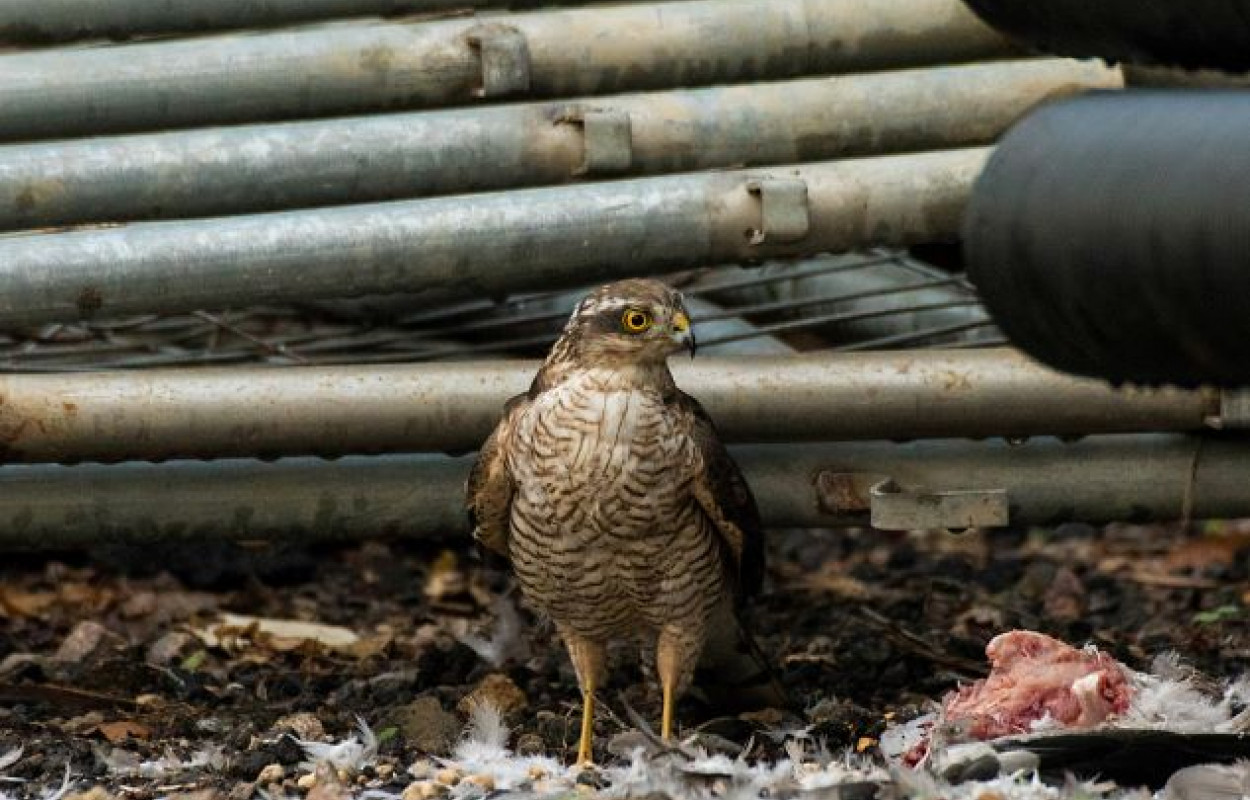Long-term trends of second generation anticoagulant rodenticides (SGARs) show widespread contamination of a bird-eating predator, the Eurasian Sparrowhawk (Accipiter nisus) in Britain

Author(s): Broughton, R.K., Searle, K.R., Walker, L.A., Potter, E.D., Glória Pereira, M., Carter, H., Sleep, D., Noble, D.G., Butler, A. & Johnson, A.C.
Published: September 2022
Journal: Environmental Pollution Volume: 314
Article No.: 120269
Digital Identifier No. (DOI): 10.1016/j.envpol.2022.120269
Rodenticides are widely used to control small mammal populations. The potential impacts of these compounds on non-target species, such as rodent-specialist predators, have long been a cause for concern. There is also evidence that species that do not usually feed on small mammals, such as bird-specialist predators, are exposed. In the most comprehensive study of its kind, this paper examines the presence of second generation anticoagulant rodenticides (SGARs) over 20 years in the British Sparrowhawk population, in order to establish how contamination patterns vary over time, space and life stage.
Scientists from the UK Centre for Ecology and Hydrology, BTO and Biomathematics and Statistics Scotland examined the carcasses of 259 Sparrowhawks which died between 1995 and 2015. Using preserved liver samples, they searched for traces of five different SGARs which are used in the UK. SGARs are normally deployed in bait to kill rodents. They are highly toxic and came about because many rodent populations developed a resistance to warfarin and other first generation anticoagulant rodenticides. The scientists wanted to know if SGAR contamination differed between male and female Sparrowhawks or between birds at different life stages (i.e. adults and juveniles). They also looked for any regional differences in the concentrations of SGARs in Sparrowhawks and whether these varied over time.
At least one SGAR was found in 81% of the Sparrowhawks studied. The most common compound detected, in 72% of the sampled birds, was difenacoum, a widely available rodenticide. These results suggest widespread contamination of the British Sparrowhawk population. This is significant because although Sparrowhawks only rarely take small mammals, the prevalence of SGARs was similar to that of the Barn Owl, a rodent-specialist. SGARs are therefore reaching predators via the consumption of non-rodent prey, likely through preying on songbirds which have been feeding from bait traps.
Although SGAR contamination was as widespread in the Sparrowhawks as a rodent-specialist species, Sparrowhawks had lower concentrations of the compounds in their systems. The levels were considered sub-lethal in almost all sampled Sparrowhawks (97%), but this might still be cause for concern; even low SGAR burdens are thought to stunt growth in Kestrels, which may affect recruitment into the adult population. Given the lack of data on the effects of sub-lethal concentrations of SGARs in Sparrowhawks, it is difficult to say for sure how these compounds might impact the birds during their lives.
As the least urbanised and least arable region, it was unsurprising that Scotland’s Sparrowhawks had the lowest SGAR exposure in the study. In contrast south-eastern England had the highest concentrations, mostly likely because it is so heavily developed by humans. SGAR concentrations increased in both regions over time, but more strongly in south-eastern England. Concentrations also varied over the course of an individual’s lifespan. As expected, adult birds had higher concentrations than juveniles, likely due to a greater opportunity to accumulate SGARs over time. Contrary to predictions, male birds tended to have greater levels compared to females, possibly because female Sparrowhawks can transfer some of their SGAR load to eggs. An experimental study on Sparrowhawks would be needed to confirm this theory.
Never before has a study on rodenticides included data over such a long period or examined the importance of demographics such as age or sex. These results are extremely valuable, as we strive to understand the nature of SGAR exposure in non-target species. In particular, they demonstrate the widespread nature of contamination in the UK, which has implications for SGAR use on a global scale.







Share this page